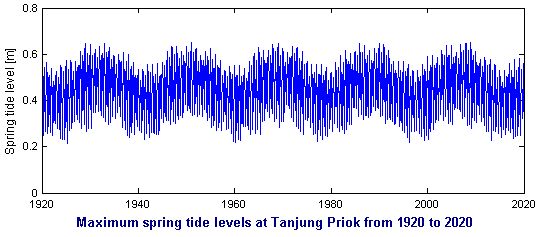Floods by Pablo Neruda
The poor live on low ground waiting for the river
to rise one night and sweep them out to sea.
I’ve seen small cradles floating by, the wrecks
of houses, chairs, and a great rage of ash-
pale water draining terror from the sky:
this is all yours, poor man, for your wife and crop,
your dog and tools, for you to learn to beg.
No water climbs to the homes of gentlemen
whose snowy collars flutter on the line.
It feeds on this rolling mire, these ruins winding
their idle course to the sea with your dead,
among roughcut tables and the luckless trees
that bob and tumble turning up bare root.
Actually, that wasn’t 100% true last year as it was a “luxury housing complex” in Pondok Labu that bore the brunt of an overflowing River Krukut. The cause was not so much the heavy rain as that in March last year the marines reduced the width of the river from six metres to two in order to expand their shooting range.
Still, although more than 250 families have had to evacuate their homes, City Hall assured them that work to demolish the culvert would commence in late December and would be completed “before Jan. 30.”
This seems to sum up the laissez-faire attitude of City Hall; their Public Works Dept. schedules ‘flood prevention’ work for the peak of the rainy season.
I’m writing this in advance of the expected “exceptional” floods caused by La Nina which, according to Sri Woro Harijono, the head of the Meteorology, Climatology and Geophysics Agency (BMKG), may not occur in a five yearly cycle. The UN World Meteorological Organization has stated that it’s already here. However, Ibu Sri has warned City Hall that this month, “there will be a high potential for flooding because nearly all areas in Jakarta are at high risk.”
Indeed. Some 40% of the city lies below sea level and it is sinking at a rate of up to 10cm a year in north Jakarta thanks to the uncontrolled extraction of groundwater and the weight of new buildings. We can add to this the rising sea level, at about 6mm a year, and the neap tides which can be expected this year judging from this illustration.
Mind you, Jakarta Governor Fauzi Bowo called on everyone to stop scaring people with predictions of massive floods this year. But I started a long time ago, so I’m not going to stop now!
Unless the lowlanders of Holland were to return and govern the city I can’t see any other solution but to abandon it to Mother Nature. However, even during the Dutch colonial times floods were common in Jakarta.
Historic floods in Jakarta
1621 First recorded flood in Batavia, although construction of canals had started two years earlier.
1654 Flood ruined most mulberry groves causing shortage of Tonkinese silk.
1699 Ciliwung river floods Batavia after Mount Salak erupts.
1714 Ciliwung river overflows after the clearance of Puncak forest areas.
1854 Batavia is a meter under water, caused by the “raging” Ciliwung.
1873 Most of Batavia under 1 metre of water.
1918 Extensive flooding. The Dutch colonial government begins work on the West Flood Canal.
1932 Flood caused by conversion of Puncak forest into tea and rubber plantations swept away houses in Sabang and Jl. Thamrin.
1942 The West Flood Canal is completed, but Jakarta still floods.
Governor Ali Sadikin (1966-77) kept the city virtually flood-free through a programme of cleaning, maintenance and construction of water channels with funds drawn from legal gambling.
1973 Sadikin’s administration completed the Master Plan for Drainage and Flood Control of Jakarta, which included the East Flood Canal.
Since the 1990’s ……..
1996 A flood sweeps through the capital and approximately 10 people die.
2000 Jakarta Governor Sutiyoso spoke about the need to dredge the West Canal and to build the East Canal. “Although we have had the master plan of the canals since 1975, due to budget problems (corruption?) we could not build them.”
2002 It is the largest flood in Jakarta’s history, 25 people died.
2007 The greatest flood in the last three centuries inundated about 40% of the city (528.8 sq.km), killed 80 people and forced about 340,000 to flee.
The then Vice Governor Fauzi Bowo offered the excuse that there was nothing that could have been done to prevent it because “Floods happen everywhere in the world.”
2012 The East Flood Canal is supposedly completed and ….?
The Post reported in the first week of this year that City Hall has finally woken up to “the extraordinary risk that disastrous flooding poses to the capital” and is “drafting a contingency plan.”
“We are planning to provide evacuation maps and flooding-mitigation guides in each community unit across the city.”
“Drafting”? “Planning”? Are they referring to this year or to a 5, 10, or 30 Strategic Plan?
…………………………………………………………………………………………………………………………………..
Terry Collins is the co-author of Culture Shock! Jakarta and writes the Jakartass blog.
…………………………………………………………………………………………………………………………………..
Jakartass BBC Interview 2007 http://www.archive.org/details/FloodingInJakartaFebruary2007






